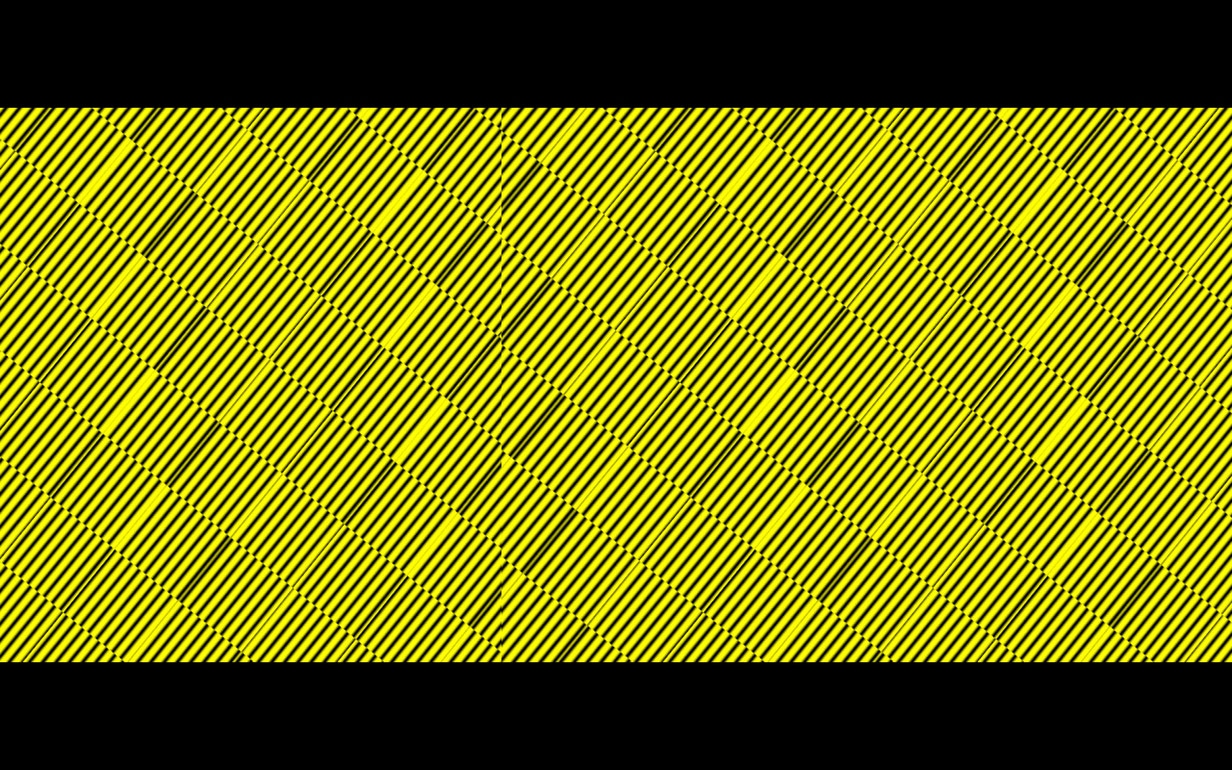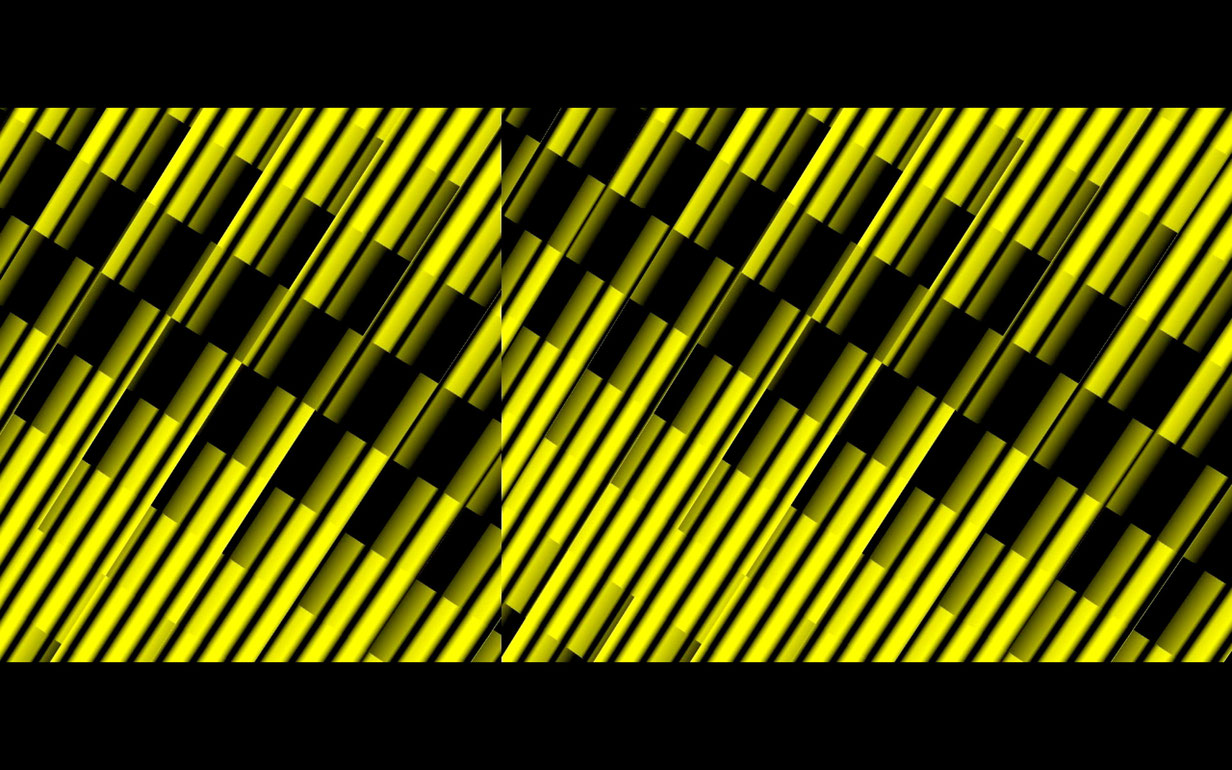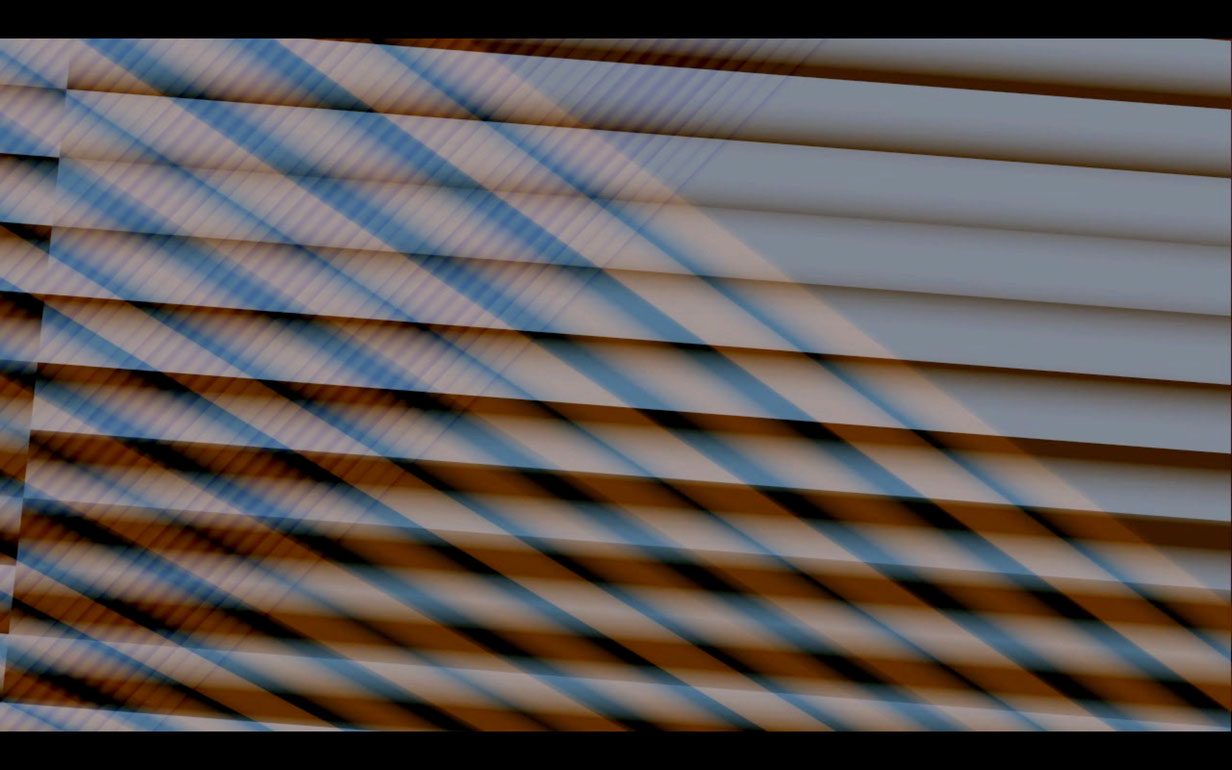Vergence
Vergence, a term from the field of optics, refers to the convergence or divergence of light rays. It also designates slow involuntary movements made by the eyes to center an image on the retina. Convergence and divergence determine the stability and definition with which an object is perceived.
Such dictionary definitions provide the point of departure for the rhythmic optical game of deception that Tina Frank and Florian Hecker initiate in their collaborative work entitled Vergence. The ratio of audio and video components are neither convergent nor divergent; expressed simply they overlap, move apart, then back together, accelerate each other, and so on. This sort of interlocking of sound and image repeats within both components, and as a result they remain autonomous to a great extent.
On the visual level, a black-and-yellow pattern of bars dissolves in stroboscopic flickering and movements in a number of different directions. The spaces this creates arch, spin, implode - this includes blow-ups, fades and zoom effects. In terms of the sound, a series of overlapping percussive patterns and pulses - in the form of throbbing, rattling, clattering, scraping and rattling - evoke the greatest possible variety of perceptive associations. Binaural, stereophonic and quadraphonic effects work together to break open systematically arranged auditory spaces: in front and behind, to the right and left, they run together unceasingly.
A finely constructed techno-psychedelic granular stream sweeps over the senses in Vergence, in an endless variety of modulations, concentrations and refractions. Hallucinogenic and evocative of images - until the colors come and the rhythms, seemingly endless, reverberate in the viewer´s mind.
(Christian Höller)
Translation: Steve Wilder
Vergence - diverging vs. converging. Driven in different directions and paths, black and yellow bars from a geometric ballet. Indebted to mathematics, the game of proximity and distance continues uncompromisingly through image and sound: they accelerate and decelerate the same program. Constant growth and shrinkage, rejecting and overlapping - creative, straightforward, techno-psychedelic.
(Diagonale Cataloge 2011)
This 6,5-minute long video of Tina Frank focuses on the threshold of spatial perception. Like a chromographic pendulum yellow-black patterns contract, unfold and overlap. They evoke rapid speed mementos of Brion Gysin’s Dreamachines aswell as Tony Conrad’s The Flicker or of Gestalt Theory from the early 20th century. After an induction period of some minutes the viewer can no longer tell if what he sees are afterimages from the color space or if these psychedelic visions are part of the videosequence.
This experience is intensified by the four-channel-soundtrack from Florian Hecker. Dynamic pulsating rhythms bring narrative cartesian coordinates from front, back, left and right into a permanent oscillation. Binaural stereophonic and quadrophonic arrangements add up to an acoustic whole which consolidates a timebased déjà vu together with an acoustic déjà entendu.
(Production note)
Vergence
2010
Austria
6 min 30 sec



